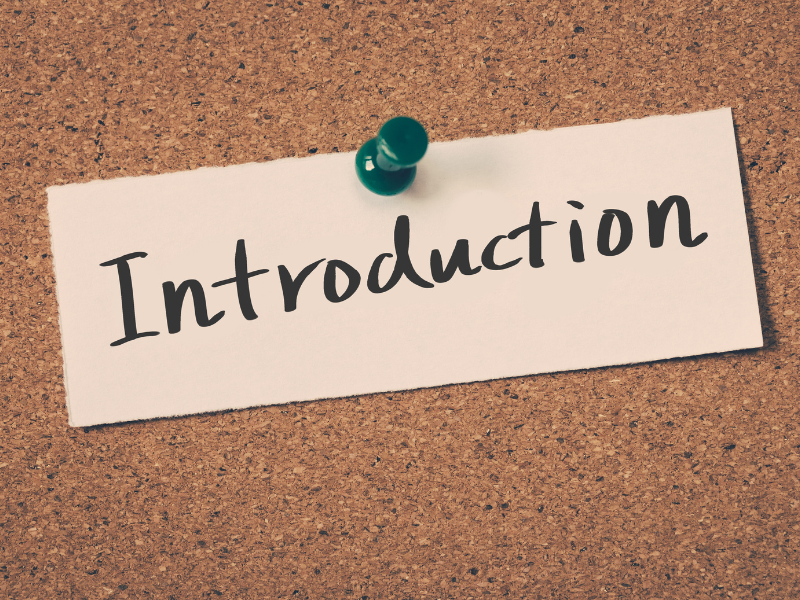With today’s hectic, hyper-connected way of life, there are no longer just enough old-school marketing techniques. Brands need to reach their target market where they are spending most of their time—online. Digital marketing can help with that.
But what is digital marketing, and why is it so important to businesses today? And how do you use it to establish your brand? Everything will be outlined in this comprehensive guide.

Introduction to Digital Marketing
Digital marketing has revolutionized the way brands connect with their viewers. Days of using billboards, radio ads, and TV commercials are gone. Today, it’s all about building interactive experiences on social media, showing up on Google, and interacting with customers through email, content, and more.
Whether you are an up-and-coming startup or a global company, you must know digital marketing to achieve.
The History of Marketing
Marketing has progressed a great distance since its emergence. From direct mail and print to radio and television, all of these have transformed the means of communication of businesses with their customers. However, nothing has transformed marketing to the extent the internet has. With the emergence of smartphones, social media, and e-commerce, businesses had to adapt.
Definition of Digital Marketing
Digital marketing is the process of selling products, services, or brands to a target audience through digital platforms, channels, and technologies. Anything from websites, search engines, and social networks to e-mail, mobile apps, and online advertising is included.
That is, it’s advertising that takes place across the web or through electronic devices.
Why is Digital Marketing Important?

Here’s why digital marketing is important today:
Increased Reach: Compared to traditional marketing, the web allows you to connect with foreigners 24/7.
- Economical: It is normally more affordable compared to TV, radio, or newspaper advertising.
- Targeted Approach: You can target specific groups by demographics, interests, behavior, etc.
- Measurable Results: Track clicks, conversions, impressions, and more in real-time.
- Enhanced Engagement: Social media, content, and email enable two-way interaction with customers.
- Better ROI: With proper targeting and tracking, you can improve your campaigns for improved returns.
Key Components of Online Marketing
Digital marketing is a broad field and composed of several basic components:
1. Website Marketing
Your site is your online shop. It has to be usable, mobile optimized, quick, and SEO-friendly. It’s where conversions usually take place—whether that’s a sale, a sign-up, or a contact form submit.
2. Search Engine Optimization (SEO)
SEO is all about getting your site more visible on search engines such as Google. The higher your site is ranked for related terms, the more traffic your site will drive. SEO incorporates keyword exploration, on- runner optimization, content marketing, link structure, and specialized optimization.
3. Content Marketing
when it comes to internet marketing. Engaging, informative, and interesting content is what can attract and retain a well-defined target audience. Content can be a blog entry, article, video, infographic, ebook, podcast, etc.
4. Social Media Marketing
Social media platforms such as Instagram, Facebook, LinkedIn, X (Twitter), and TikTok provide a good platform to interact with your public, create awareness about your brand, and drive traffic. This is done through organic post, as well as paid advertisement.
5. Email Marketing
Email marketing is amongst the best tools for customer retention and nurturing. It’s personal, direct, and inexpensive. Whether newsletters, product promotions, or drip campaigns, email can provide high ROI.
6. Pay-Per-Click Advertising (PPC)
PPC simply means paying after another person has clicked on your ad. Targeted advertising options through Google Ads and social websites can get you noticed in a snap and send traffic to your website.
7. Affiliate and Influencer Marketing
By collaborating with affiliates or influencers, brands can reach new people and establish trust in a short time. They market your goods for a charge or a commission.
8. Mobile Marketing
Since mobile usage is more than desktop, marketing efforts have to be mobile-centric. That encompasses SMS promotion, mobile site, app advertising, etc.
9. Analytics and Data Data underlies
online marketing. Google Analytics, Facebook Insights, and marketing automation software track key information regarding campaign performance and customer activity.
Types of Digital Marketing
Let’s look at a few main types of digital marketing in action:
- Inbound Marketing: Attracting customers through content, SEO, and value-driven strategies.
- Outbound Marketing: Pushing out messages via display ads, pop-ups, or cold emailing.
- B2B Digital Marketing: Targeting other businesses via LinkedIn, whitepapers, and email campaigns.
- B2C Digital Marketing: Targeting consumers via social media, influencers, and online stores.
Benefits of Digital Marketing

Here are some standout benefits that make digital marketing indispensable:
- Real-time Interaction: Engage with users in real-time through chat, comments, or social stories.
- Brand Development: Establish authority and trust through consistent online presence.
- Global Reach: Expand beyond borders without the high costs of traditional international marketing.
- Multichannel Strategy: Use a mix of channels (SEO, PPC, email, etc.) to diversify your approach.
- Personalization: Send messages that are personalized according to user behavior and preferences.
- Automation: Save time and improve efficiency with tools that automate repetitive tasks.
Challenges of Digital Marketing
Despite the benefits, digital marketing comes with its own set of challenges:
- High Competition: Standing out requires creativity, strategy, and constant innovation.
- Rapid Changes: Algorithms, platforms, and tools evolve fast—you need to keep up.
- Privacy Concerns: With increasing data privacy regulations, marketers need to be cautious.
- Tech Dependence: Technical glitches, website downtimes, or tracking issues can impact performance.
- Learning Curve: For beginners, navigating the digital landscape can be overwhelming.
How to Get Started with Digital Marketing
Ready to dive in? Here’s how to start:
Set Clear Goals: Know what you want to achieve—traffic, sales, leads, engagement, etc.
- Know Your Audience: Understand their needs, behavior, and preferences.
- Build a Strong Website: A clean, fast, SEO-optimized website is essential.
- Create Quality Content: Emphasize problem-solving and value.
- Choose Your Channels: Based on your audience, select the platforms that matter most.
- Invest in Tools: From SEO tools to email marketing software, tech helps boost efficiency.
- Measure & Optimize: Track everything and continuously improve based on insights.
Final Thoughts
Digital marketing isn’t just a trend—it’s the future. In a world where people are constantly online, businesses must embrace digital strategies to stay relevant, competitive, and successful.
Whether you’re just starting or looking to level up your current efforts, the key is to stay informed, test continuously, and focus on providing value to your audience.
With the right mindset and tools, digital marketing can become your strongest business growth engine.
